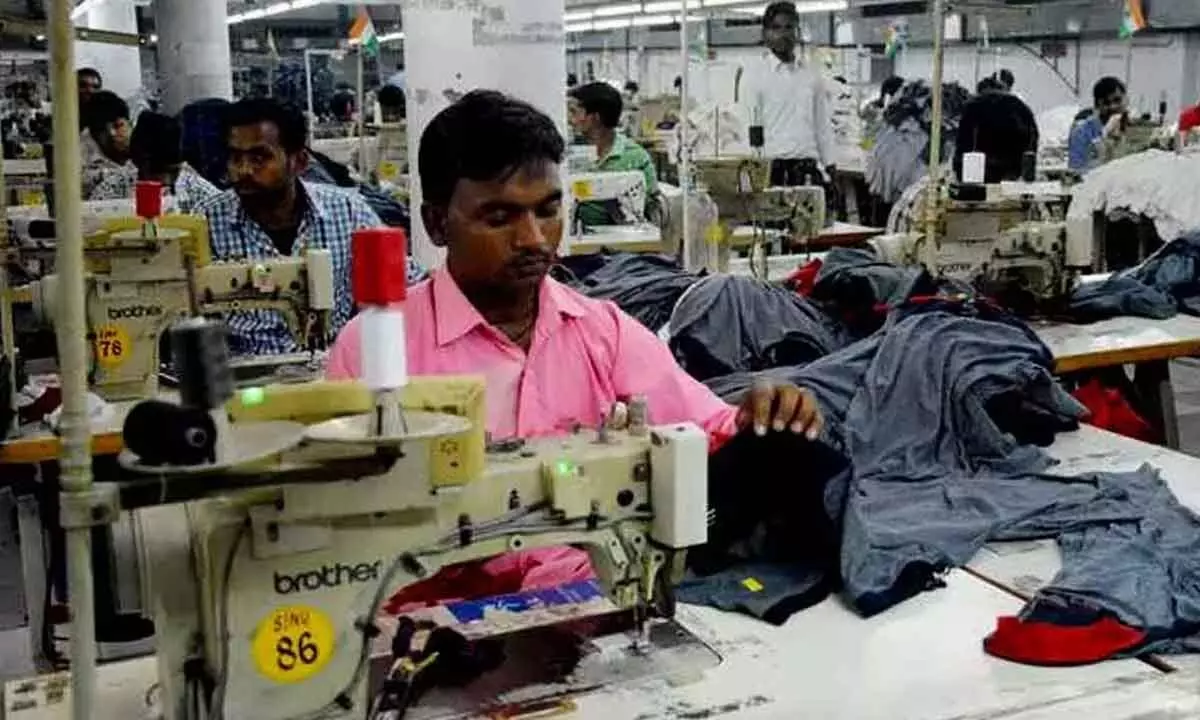High time to attract fresh talent in textile and garment industry

Improving the work culture of factories, offering more attractive wages, giving them opportunities to get promoted are some of the steps need to be taken to attract young workforce
India made history last month by achieving the ambitious target of $400 billion in export and we Indians have proud of this. What is even more overwhelming is that despite all odds our various sectors are aggressively working to continue this momentum and due to uncertainty in the global scenario, this is high time for India to mark its strong presence in global trade especially, the instability in countries which also have competition with India, at least in a few product categories.
The export of textiles is also doing well, and have a look at a few headlines of recent days, all spreading positivity about the Indian textile and apparel trade, almost 63 companies have applied for a massive PLI scheme, the Textiles Technology Development Scheme (TTDS) with more subsidy than Amended Technology Upgradation Funds Scheme (ATUFS) is on the way, 13 States have applied for 7 PM MITRA Parks and apart from headlines there are many companies across India, those are in process to enhance their production capacities, investing in new technology and even many are going for new factories with new technology.
National garment retail giants are almost acquiring brands, designers and other companies, continuously new stores are being opened, and textile and garment companies are also geared up for IPOs.
So, there is a lot of positivity in this scenario. Though the cotton price is as usual making new records and the industry is suffering a lot but another important point that is being missed and can be a big hurdle to achieving the garment export target, as well as the ambitious expected growth of the Indian market, is the lack of qualified trained professionals and skilled workforce for the hardcore production on stitching and other machines. I don't see any effort to arrange for the mid-level managers, technical experts as well as tailors, and another workforce to complete the process from fabric production to managing retail operations of garments.
Without taking the support of data and going into the technicalities of the same, is it not sufficient to see that if the industry is expecting 100 per cent growth in the next 3-4 years, we need to double our workforce or enhance their number at least by 50 to 60 per cent. Yes, the workforce is now becoming multi-talented as well as multi-tasking, and factories are adopting maximum automation and ensuring monitoring of every process and step. There is growing use of software, robotics, AI, IOT etc. But can we deny the fact that textile and garments are labour-intensive industries, and will remain the same despite all possible use of technology?
At the same time, be it mid-level or blue collar jobs, new talent is hardly interested in textile manufacturing operations, especially in garment manufacturing. Retail may be an exception as it is a little comfortable compared to hardcore manufacturing activities.
NIFT or a few other such institutes which are a good source of mid-level managers are also witnessing a drop of professionals those wish to work in manufacturing activities as lucrative options like e-commerce, physical retail etc, for such young professionals are increasing.
And correct me if I am wrong that despite, many official skill development schemes and individual efforts of companies in last decade, still there is a lack of skilled workforce in the garment industry. Various hubs are still largely dependent on the migratory workforce and these migratory workers are not happy with their overall level of income and facilities they get in factories as well as the areas where they live to perform their work.
Many States, where the garment or even textile industry is dominating are not increasing the minimum wage to ensure a good or at least satisfactory life of workers. Brands, civil societies and other stakeholders are unable to create an industry that can give living wages. In fact, the workers are in a vicious circle to work more to make more money.
So, how the industry can attract new workers? How many of us have seen the young boys and girls of 18 or 19 years, joining the garment factories or textile mills happily. And even whatever joins the factories, how many of them have a dream to become production managers of the same factory.
The collective efforts are missing to attract the young workforce and it can be done only by improving the work culture of the factories, offering them more attractive wages, recognize their work and realise how important is their task, give them opportunities to get promoted. At the same time, they should get support, time and motivation to continue their studies. Some of the factories are taking some steps so they can get a fresh workforce but it is a limited chunk of the entire industry.
This is high time to think and work to attract young and fresh workforce in the textile and garment industry otherwise it will be too late as attracting the workforce takes time.
(The author owns a garment manufacturing setup in a rural area, which employs mostly women workers)
















